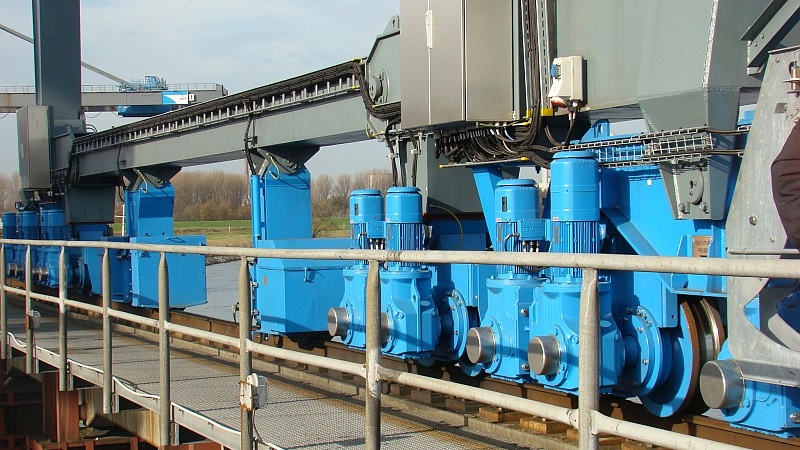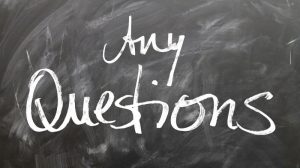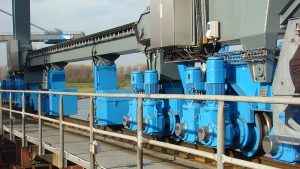What is this article about?
Legal disputes in mechanical engineering are characterized by complex technical and legal challenges, in overcoming which the court’s “evidence decision ZPO” in accordance with the Code of Civil Procedure (ZPO) plays a crucial role. Adhering to a stringent procedure and understanding the legal aspects of an evidentiary order are of paramount importance for everyone involved in a mechanical engineering litigation.
In this article I devote myself in detail to the court decision on evidence in legal disputes in mechanical engineering, highlighting specific cases with the special challenges of “technical-law-technical” translations. The goal is to give readers a better understanding of the importance and precise process for making evidentiary decisions in mechanical engineering. Examples are presented.
In this article, get started on a multi-faceted and challenging technical-legal topic.
Legal basis
A few explanations are necessary to get started with the topic.
Machine expert: The forensic court expert
In common usage, the term “expert” refers to a person who has an in-depth understanding of a particular matter compared to others. The expert is prepared to provide objective and expert information on the specific matter.
In the judicial context, however, the definition of a forensic expert is clear and relatively easy to grasp. The specific content aspects of expert work are not discussed here, but it generally refers to the appointment by the court on the basis of an evidentiary decision as an expert (“machine expert”) for the court.
The judicial expert works for courts and public prosecutors.
The most important procedural regulations
There are different procedural rules in Germany, each of which applies to different areas of law and types of procedures. The most important procedural regulations are:
- Code of Civil Procedure (ZPO),
- Code of Criminal Procedure (StPO),
- Administrative Court Code (VwGO),
- Labor Court Act (ArbGG),
- Social Court Act (SGG),
- Financial Court Regulations (FGO),
- FamFG (Law on Procedure in Family Matters and in Matters of Voluntary Jurisdiction).
In mechanical engineering it is
The Code of Civil Procedure (ZPO) is almost exclusively relevant
in legal disputes with a court expert or machine expert and a corresponding order of evidence in accordance with the ZPO.
Code of Civil Procedure (ZPO)
The Code of Civil Procedure (ZPO) regulates the legal procedure in Germany for civil proceedings in court. It serves as the basis for conducting civil proceedings, i.e. legal disputes between private individuals, companies or other non-governmental institutions. The ZPO sets out the procedural rules and procedures that must be followed by the courts in order to ensure fair and equitable decision-making.
The Code of Civil Procedure contains provisions on various aspects of civil procedure, including the jurisdiction of courts, the filing of an action, the taking of evidence, the judgment procedure and compulsory enforcement. The aim is to create an orderly and legally secure framework for the enforcement of civil law claims.
It is an essential legal instrument that forms the basis for civil justice in Germany.
The Code of Civil Procedure (ZPO) also regulates, among other things, the provisions on
- the expert evidence as well
- the judicial independent evidentiary process.
The burden of proof according to the ZPO
According to the Code of Civil Procedure, the burden of proof generally lies with the party asserting its claims for a specific legal reason. This means that the party who claims something must also provide evidence of it in order to be able to enforce their claims in court.
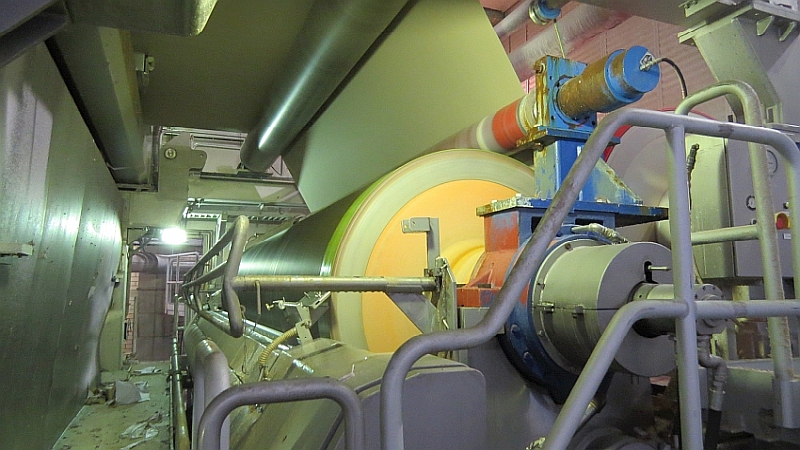
The principle is basically:
“Anyone who claims must prove.”
Taking evidence
There are various ways to provide evidence in court. The following sub-points are common, among others.
Witness evidence
Witness evidence, also known as witness testimony, is a form of evidence in legal proceedings in which people give evidence in court about facts that they themselves have perceived. Although witness evidence is an important part of the legal process, it presents certain risks and challenges:
- Unreliability of witnesses: Witnesses may be mistaken or their perception may be distorted. Factors such as stress, anxiety, memory problems, or bias can affect the reliability of testimony.
- Lack of objectivity: Witnesses can be subjective and allow their statements to be influenced by personal beliefs or feelings. This can lead to a distortion of the facts and make it difficult for the court to make an objective assessment.
- Memory problems: Witnesses may have difficulty remembering details or recounting exact times and events. This can lead to vagueness and inaccuracies in the statements.
In principle, evidence provided by witnesses is always associated with a very high risk, which increases as the time between the event and the witness interview increases.
Judicial inspection
During a judicial inspection, the court or judge personally goes to the scene of the incident to get an idea of the local conditions. This form of taking evidence allows the court to gather immediate impressions that go beyond what written or oral reports can convey.
Typically, judicial inspection is used in connection with matters where a direct view of the location or situation is important. This may occur, for example, in real estate disputes, accident reconstruction, or other cases where visual on-site information is necessary.
In over 20 years of working as a court expert, I have only had one case in which the judge was present at the on-site hearing. In this respect, I can report that the “court inspection” is very unusual in mechanical engineering and for mechanical appraisers
almost never happens.
Expert evidence from machine experts as court experts
In certain cases, expert evidence appears as an alternative to court inspection. The expert examines the relevant facts on site and documents his observations in a report for the court. The expert’s expert assessment usually leads to more precise results compared to the often less expert observation of the judge.
As science and technology develop, knowledge has become increasingly complex, specialized and sometimes more uncertain over the years. Many judges therefore no longer feel able to have the necessary specialist knowledge for almost all questions and try to avoid appeal proceedings. As a result, expert evidence is becoming increasingly important in reaching a verdict in court proceedings.
The challenge of expert evidence lies in the specific problem areas of the various areas of knowledge, which ultimately form the basis for the legal dispute to be clarified.
However, the evidentiary value of the expert can be impaired if there are linguistic deficits in the communication between the court and the expert before and during the preparation of the report. This occasionally leads to
incorrect or unclear questions in the evidence decision for the machine expert.
In addition, the machine appraiser is often not aware of which legal aspects are actually important in order to advance legal clarification. It is therefore crucial that communication between the court and the expert is precise and clear to ensure an effective and correct assessment of the technical issues in dispute.
Relationship between court and expert
However, the judicial expert does not have any contractual relationship with the court that commissioned him to take evidence. Rather, he is fulfilling a duty to the state. The court acts solely on the basis of procedural rules.
The relationship between the court and the court expert is therefore a legal relationship under public law, the basis and content of which derives exclusively from the respective procedural law.
The court expert is strictly bound to the court order.
This follows from procedural law. Since the court develops and shapes the procedure in application of procedural law as the master of the procedure, the court expert is not entitled to deviate from the court’s mandate on his own initiative.
Any deviation from the evidentiary decision carries with it the risk of
Concern of bias
to be rejected. This is usually justified because the party to the legal dispute, to whose disadvantage the findings or assessments that go beyond the evidentiary decision have an effect, is one-sidedly disadvantaged by the expert.
Helper of the Court
A court expert is an assistant to the court. The scope of his duties is defined in the evidence decision.
Both the court and the mechanical expert as an expert commissioned by the court through an “ evidence order in mechanical engineering ” are each completely independent.
Court experts are characterized in particular by the obligation to be impartial, which they demonstrate through the oath formula for experts according to Section 410 ZPO and Section 79 StPO
The report is or was provided “impartially”,
have expressed.
Provision principle
The civil process is governed by the principle of party rule. According to this principle of provision, it is incumbent
the parties to present and substantiate their claims and statements of fact to the court by presenting evidence (documents, certificates, witness statements, expert reports, etc.).
The court therefore does not have to actively search for evidence on its own initiative. The parties must provide the necessary documents and information themselves.
Evidence of facts is only taken if the opponent disputes the statement of facts. Undisputed facts apply in accordance with Section 138 Para. 3 ZPO as granted.
The truth is then assumed by the court.
The court can, at its own discretion, order expert evidence, i.e. a court report, ex officio.
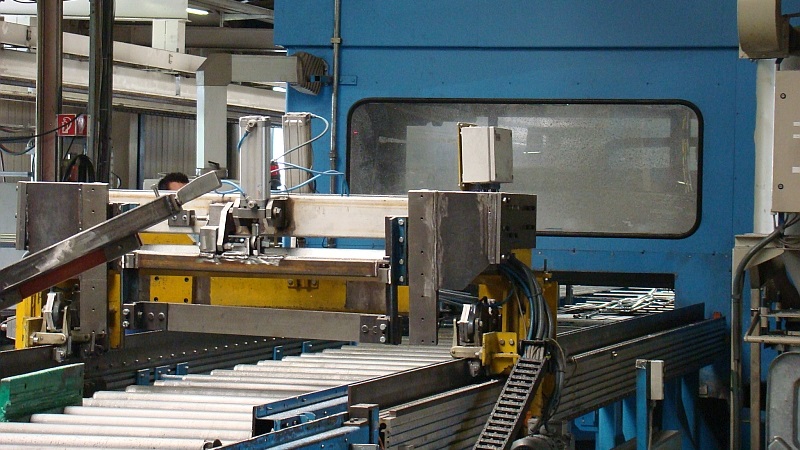
Courts do this in order to gain the expertise to assess the facts and to better understand the connections in the subject matter of the dispute through expert support.
Evidence decision ZPO in mechanical engineering
The ZPO evidence decision defines the tasks for the machine expert on behalf of the court.
The expert may appear in court without prior consultation
never deviate from an evidentiary decision.
After the machine expert has completed the court report with reference to the ZPO evidentiary decision, the judge or court is not bound to the report.
Classic mistakes in the “evidence decision in mechanical engineering”
Of course, in reality there are always major and minor problems in the cooperation between the machine expert commissioned by a court, the court or the responsible judge and the parties.
The distribution of roles between the court and the court expert
This situation is that the judge, i.e. the court, has sole decision-making authority. Although the expert has the necessary expertise for the questions to be clarified in the evidentiary decision, he has no decision-making authority at all.
Things become difficult when the expert misunderstands the evidence decision because of “ interesting wording .”
It is just as problematic for the procedure if the court or the parties formulate their own questions in the evidence decision, which, due to the natural lack of technical knowledge among the responsible lawyers, do not get to the core of the matter that needs to be legally clarified.
Formulation of the questions of the ZPO evidentiary decision
The questions to be clarified, which are formulated in the ZPO evidentiary decision in a legal dispute, often arise directly from the parties’ written submissions. In some cases, the questions are “translated” into the evidence order by the court or are rephrased in their own words.
This is where the greatest danger lies for the parties involved.
If the technical questions to be clarified in a “ mechanical engineering evidence decision ” are formulated in a technically incorrect manner, the following problems are inevitable:
- Ambiguities when preparing the report: If the technical questions contained in the evidentiary decision are imprecise or ambiguous, this can lead to ambiguities when preparing the report. The expert may have difficulty understanding the exact scope of the required investigation as intended by the court.
- Lack of relevance to the legal issue: Incorrect technical questions could result in the expert examining technical aspects that are not relevant to the actual legal issue. This can result in wasted time and money without actually obtaining decision-relevant information.
- Difficulty clarifying the issue: If the technical issues in the evidentiary order are not technically precise enough, this may result in the expert not being able to clarify the essential technical elements of the case. This could affect the court’s ability to make a clear decision on the technical aspects of the dispute.
Costs for a court report
It is always interesting when a court file is received with an “ evidence order for mechanical engineering ” and the court has obtained a gross advance on costs of €2,000.00 or less. I can say in general that it is completely impossible to provide a court opinion in this subject area for this amount. This should actually be clear to the courts. Courts deal with gross amounts. This means that for the self-employed entrepreneur, who is of course also a machine appraiser on behalf of the court, around €1,680.00 net remains due to sales tax.
With a court hourly rate for machines or mechanical engineering of €130.00 net according to JVEG, this means that an expert report should be completed after 13 hours with a gross cost advance of €2,000.00.
This is completely utopian when it comes to real problems in mechanical engineering.
Why is that?
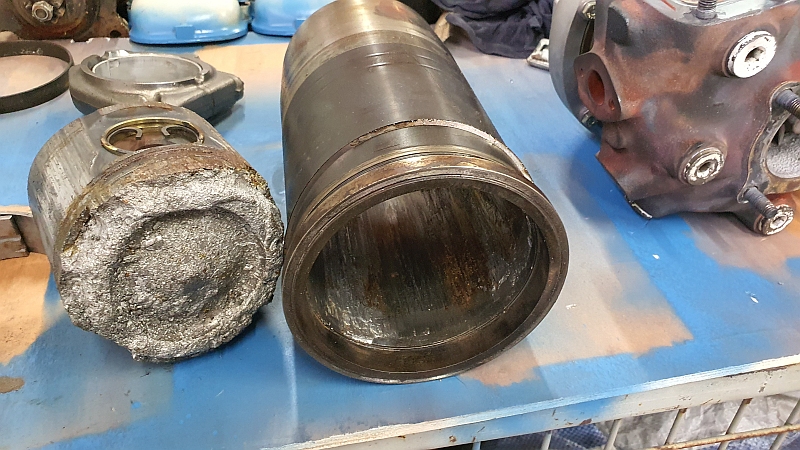
The file must be read to understand what the subject of the dispute is. Studying the files usually also provides additional technical information. It will then also be clarified whether further additional information needs to be requested from the parties in order to process the report. As a rule, the files for an “ evidence decision in mechanical engineering ” are thick. Furthermore, no direct contact may be made with the parties. The result is that court orders always require more administrative time than any party order for machine experts.
After all, there is almost always an on-site appointment for fact-finding purposes. This means travel time, hotel costs, travel expenses.
The on-site court appointment always means at least a full working day. Then there are the preparations for the on-site appointment. The findings of the on-site visit in relation to the evidentiary decision must be documented. The questions in the evidentiary decision must be answered. In almost all cases, the report is then bound and sent to the court in the desired number. After this very short explanation, every layperson will realize that a court report in real cases in mechanical engineering must cost at least €5,000.00 gross.
It should be particularly clear if you look at Figure 2 as an example. After all, complex systems and machines in manufacturing companies are predominantly the subject of court reports.
It is obvious that questions arising from an order of evidence under the Code of Civil Procedure (ZPO) cannot easily be answered precisely by simply looking at it on a court order.
Double translations "Technology-Law, Law-Technology"
A major problem in disputes in mechanical engineering is the necessary translations. Technicians, engineers, managing directors, experts, court experts and lawyers speak the same language.
However, it does not mean that we understand each other technically because of the different areas of expertise.
In reality, companies with technical and legal problems turn to lawyers very quickly. As has been emphasized so often, lawyers are experts in the law. The deeper the legal dispute goes into the technical details, the less likely they are to understand the technical problem. This is completely normal. However, it is necessary that lawyers understand it at least as “well” as possible.
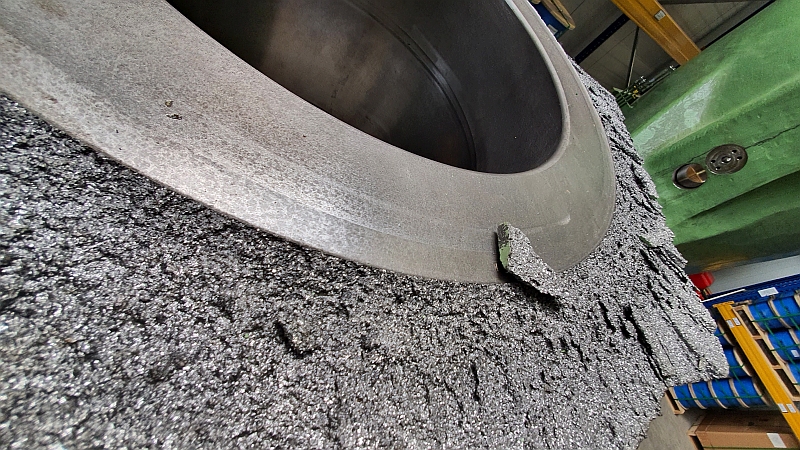
The lawyer of a party in a legal dispute or in independent evidence proceedings has a major influence on the evidence decision (ZPO). This means that questions are usually formulated according to the understanding of your own party lawyer. The court expert then has to understand this “correctly”. The machine appraiser on behalf of the court then writes the court report. An experienced and good court expert should formulate his court report in such understandable language that even technical laypeople, i.e. party lawyers and judges, can understand it.
So it’s a back and forth of formulations. Technical facts that are important can get lost.
Wording can also arise that can no longer be proven by the court expert in court proceedings. This is problematic because it is always a disadvantage for the party responsible for providing evidence and, in cases of doubt, costs the parties or one party money without producing a meaningful result.
That’s why I recommend
to involve a technical and, above all, forensically experienced expert on the party side at an early stage in order to formulate the questions for the evidence decision on the party side in a technically precise manner and without a technical boomerang.
Recommendations from a technical perspective
Overall, it is crucial that technical questions are carefully worded in the evidentiary decision to ensure that they are precise, relevant and understandable. This helps to ensure efficient and appropriate clarification of the technical aspects in a legal dispute.
General recommendations for court experts
Of course, it is advisable to inform the court as a judicial expert if you have difficulties understanding the evidence decision. In almost all cases the court will try to resolve this.
In addition, as a court expert, it is possible to tell the court how you “understand” the question as a machine expert. The court will then very likely ask the parties whether the machine expert’s interpretation of the evidence decision is correct and meets the (technical) core of the question.
Evidence decision in mechanical engineering: examples
There are numerous examples I could present. I have only selected four that exemplify the problem of wording in the order of evidence in court proceedings.
example 1
When I received this question about Figure 1 in an order of evidence in the report, I seriously asked myself whether the court was joking with me.
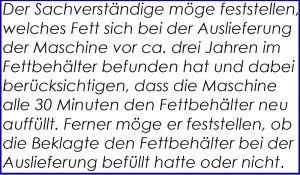
How on earth is a forensic expert supposed to answer this question if he doesn’t have clairvoyant abilities?
3 years after delivery, no one can determine which grease was in the grease container when it was delivered if it is refilled every 30 minutes.
In this case, I called the judge and informed them that I cannot provide this report and that there is no one who can answer this issue in the litigation. The judge was pleased. He asked me to briefly summarize the reasons for this in a letter. The reason for the joy was simple: the proof could no longer be provided. The court could therefore decide. Such situations have a bad outcome for the party responsible for providing evidence. I asked myself the question:
How can you, as a party with a burden of proof, bring a lawsuit with such an evidentiary decision?
Example 2
Figure 2 shows an excerpt from a very long “ Evidence Decision in Mechanical Engineering ”.
As can be seen, a single question often contains multiple sub-questions. This wording of the evidentiary order also partly contains hypotheses of the party responsible for the relevant question of the evidentiary order.
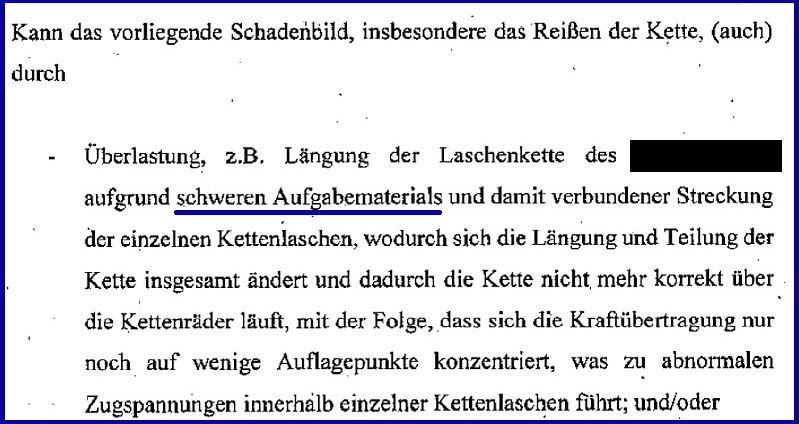
You can easily see in Figure 5 that the chain links were torn off. Otherwise, a repaired and completely modified machine was demonstrated at the site visit. The replaced and damaged components were stored separately. Under such circumstances it is not possible to precisely determine the technical cause.
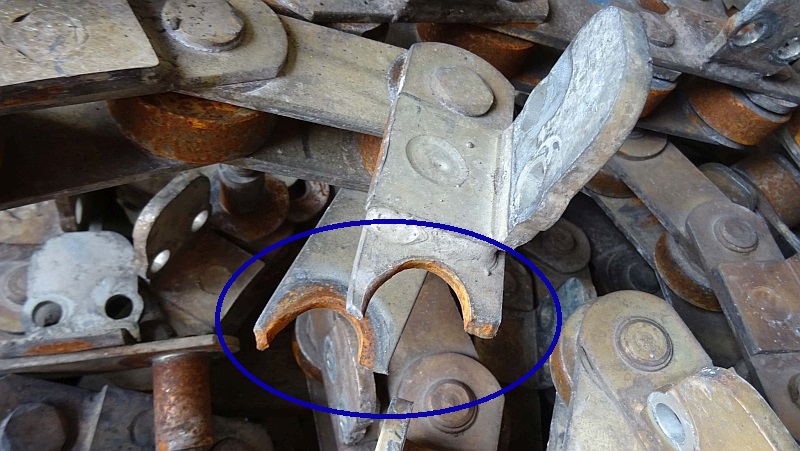
It is technically obvious that the failure of the chain clearly occurred because there was a significant increase in load in the cracked cross-section of the chain. You can also see in Figure 5 that the formerly round cross section now has an oval shape.
This occurs when the load is increased and the loaded cross-section can no longer withstand the stresses (“stresses”). In the context of the visible oval, the only technical explanation regarding the machine under discussion in this dispute is that it became entangled with an obstacle and continued to advance anyway.
However, the excerpt from the ZPO evidence decision according to Figure 2 contains, for example, the hypothesis that “ heavy feed material ” was responsible for the failure of the cross-section. However, the phrase “ heavy feed material ” is technically vague.
Why is such a question included in an evidentiary decision if the machine has been significantly modified?
A machine expert in the role of a court expert can only make plausible findings of fact if the situation that is to be technically assessed exists and is legally disputed between the parties.
There will always be unresolved legal questions left if the disputed object is presented in a changed condition at the on-site court hearing. I always ask myself the question,
Why do parties pursue a lawsuit or an independent evidentiary procedure under such conditions?
As a party expert, I always recommend that my clients have a substantiated evidence preservation report drawn up in such cases. With the evidence preservation report, it is possible to file a lawsuit in court straight away. In a legal dispute, a technically plausible evidence preservation report is always good “instructions” for the later court expert commissioned by the court.
It is completely clear that operators of machines cannot wait until the ZPO evidentiary decision exists, an expert visits on behalf of the court, carries out an on-site visit and only then begins the repair.
However, if a lawsuit is filed or an independent evidentiary procedure is sought and the evidence is largely destroyed, this makes no sense to me as a machine appraiser. In such a case, there is a very high risk that the party required to provide evidence will no longer be able to provide evidence.
Example 3 for judicial evidence in the case of machine vibrations
Figure 3 shows the evidentiary decision for a vibration case in court.

In the example shown in Figure 4, the professional expert in the field of machine vibration immediately faces technical questions:
- What are “noticeable vibrations”?
- How were these machine vibrations determined?
- Where were these vibrations detected or where should the vibrations be detected in the legal proceedings?
In addition, such an evidential decision raises the question of how a court expert is supposed to determine what any employees may have said in the meantime.
Examining witnesses is the task of the responsible court.
Court experts are not allowed to examine witnesses. Rather, they are experts in their specific field and the court’s helpers in this field.
Example 4
The example in Figure 4 shows that the discharge screws are no longer installed in the system being assessed at the time of the legal proceedings.

A judge has no chance of recognizing that something like this can no longer be checked in the case of vibrations in machines.
When it comes to such evidentiary decisions, it is always unclear to me why parties enter into a legal dispute under such technical conditions. There must be competent technical experts on the party’s side who should give the party lawyers appropriate technical advice. The crucial question for the forensic expert in a case according to Figure 4 is:
How should this question be answered? It’s not working.
Recommendations on the “evidence decision in mechanical engineering” for the parties
Since the process is determined by the principle of party rule, in my view it is particularly important to formulate your own questions about the evidentiary decision in mechanical engineering problems in a very targeted and precise manner.
The aim must always be for the machine expert commissioned by the court (“court expert”) to be able, if possible, to answer questions in a way that is helpful for their own party.
This is exactly where the problem begins in reality:
Many questions in technical evidence decisions are technically imprecise.
If determinations are no longer possible, it is always to the detriment of the party responsible for providing evidence.
In view of this, I generally recommend that you prepare the ZPO before initiating a lawsuit and formulating questions in the evidence decision
external technical expertise from an experienced court expert
to catch up.
This is not a mistrust of lawyers. There are excellent lawyers with whom I have already worked. However, as a party you must never forget:
Lawyers are needed for legal disputes at the regional court and higher. However, the lawyers are experts in law and not in the specific technical subject matter in mechanical engineering that is at stake.
A lawsuit or an independent evidentiary procedure with relevant technical questions that need to be clarified should only be filed once the technology as the subject of the dispute in mechanical engineering has been clarified internally by the party.
This increases the likelihood that
the own party’s point of view is also confirmed in the proceedings by a court expert.
Conclusion and final thoughts
Commercial companies that operate or produce in the areas of mechanical engineering, plant engineering and machinery potentially face legal disputes. In such cases, the Code of Civil Procedure (ZPO) is almost always relevant, especially when it comes to legal disputes or independent evidence proceedings in court.
According to the ZPO, the burden of proof lies with the party asserting certain claims. In legal disputes, an “expert report” is often offered as evidence. In such situations, the responsible court issues an order for evidence in accordance with the ZPO and commissions a machine expert as a court expert who is strictly bound to the court order.
The technical-legal challenge is that technical questions are often formulated in a technically incorrect manner in a “ decision of evidence in mechanical engineering ”. This results from “ translation problems ” between the disciplines of engineering and law. Although the same official language, namely German, is used in German courts, such “translation problems” can affect the substantive answers to the questions in the evidentiary order.
It also happens that the actual technical issue fades more and more into the background in the course of a legal dispute and legal discussions “suddenly and unexpectedly” come to the fore. In my experience, this does not help commercial companies in dispute because they want to have the technical problem clarified as the basis for the legal dispute.
Therefore, it is advisable that companies facing legal disputes
Call in an experienced machine appraiser as a technical expert at an early stage.
This allows meaningful technical questions to be formulated, which can then be integrated into the court’s ZPO evidentiary decision. This approach reduces the risk of one’s own questions turning against one’s own party, minimizes questions that are pointless and therefore generally reduces procedural costs.
It is crucial that companies in legal disputes from the technical areas mentioned
Call in external experts and lawyers for advisory support.
This enables a professional design of the evidence decision according to the ZPO with sensible technical questions, which makes the work of the court expert easier and makes the risk of legal costs more calculable.

